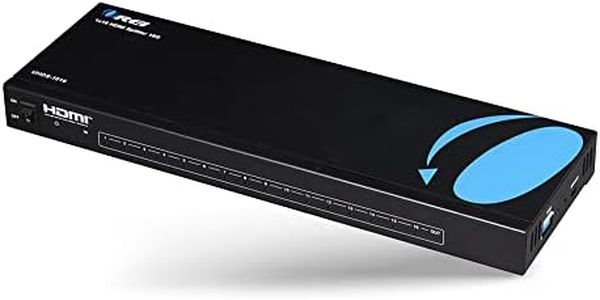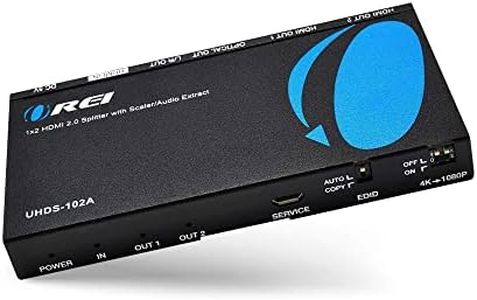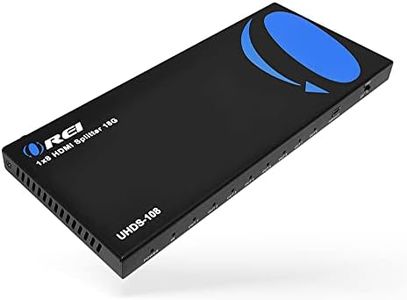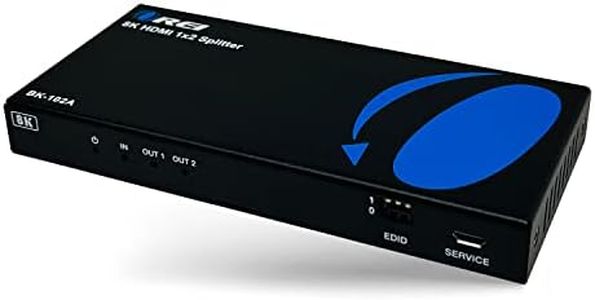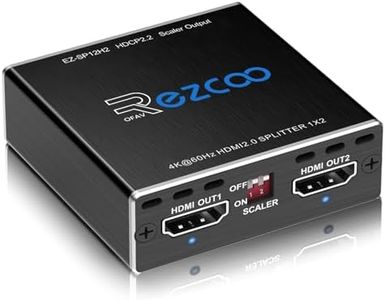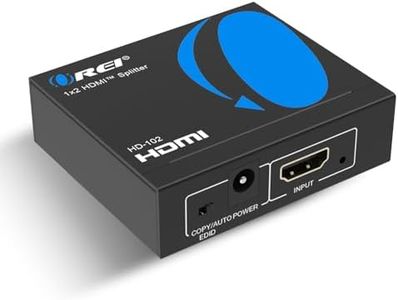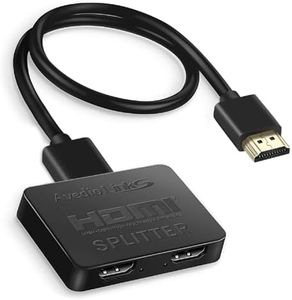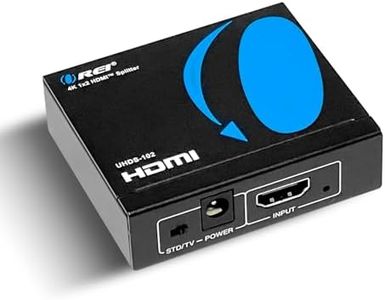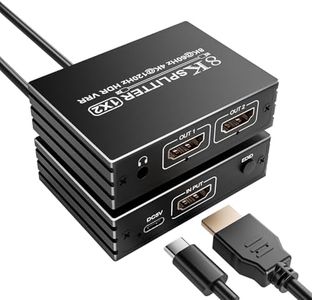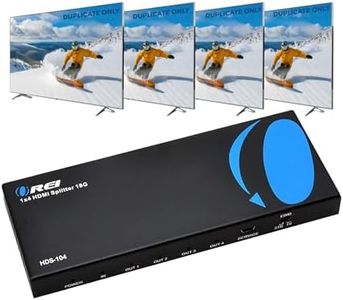We Use CookiesWe use cookies to enhance the security, performance,
functionality and for analytical and promotional activities. By continuing to browse this site you
are agreeing to our privacy policy
10 Best HDMI Splitters
From leading brands and best sellers available on the web.Buying Guide for the Best HDMI Splitters
When you’re looking to purchase an HDMI splitter, it’s important to understand how they work and what your specific needs are. HDMI splitters are devices that allow you to take one HDMI source (like a game console, Blu-ray player, or streaming box) and send that signal to two or more TVs or monitors. Not all HDMI splitters are the same, and choosing the right one for your setup will make a big difference in performance and reliability. Think about how many outputs you need, what quality of signal you expect, and any extra features that might make your use easier. Understanding the key specifications will help you narrow down your choices and find the best fit for your system.Number of OutputsThis specification tells you how many displays or devices you can connect to your single HDMI source using the splitter. For example, a 1x2 splitter allows you to connect one source to two displays, while a 1x4 splitter connects one source to four displays. The higher the number of outputs, the more screens you can use at the same time. If you only need to connect two TVs, stick with a 1x2 splitter, as larger splitters may be more expensive or complicated than necessary. Count how many screens you want to use and choose a splitter that matches that number for the cleanest and most reliable setup.
Supported ResolutionSupported resolution refers to the maximum video quality (such as 1080p Full HD, 4K, or even 8K) that the splitter can handle and send to your screens. Higher resolutions mean clearer and sharper video but require your devices and cables to support those resolutions too. If you only watch standard HDTV or use older monitors, a splitter supporting 1080p will work fine. If you have new 4K or 8K TVs, look for a splitter that supports those resolutions to avoid downgrades in picture quality. Always match or exceed the top resolution your own screens can display.
HDMI VersionHDMI version refers to the technology standard supported by the splitter (such as HDMI 1.4, 2.0, or 2.1). Newer versions enable higher resolutions, faster refresh rates, and support for features like HDR or enhanced audio. If your devices are all a few years old, HDMI 1.4 may be sufficient. If you want 4K at higher refresh rates or advanced features, you’ll need a splitter that supports HDMI 2.0 or above. Check the capabilities of your source device and displays, then choose a splitter that matches or is newer than those versions.
HDCP SupportHDCP (High-bandwidth Digital Content Protection) is a technology that protects copyrighted content from being copied. Some streaming devices, Blu-ray players, and even game consoles require all connected equipment to support the correct version of HDCP. If your splitter doesn’t support the right HDCP version, your content might not play at all or could be downgraded in quality. Make sure to check what HDCP version your devices need (like HDCP 1.4 for HD or HDCP 2.2 for 4K content) and choose a splitter that is compatible.
Powered vs. PassiveSome HDMI splitters require power (usually via a USB cable or power adapter), while others are passive and just split the signal without external power. Powered splitters amplify the signal and often allow longer cable runs or more stable transmission, especially at higher resolutions. Passive splitters are simple but may not work with all setups or might cause signal losses, particularly if you use long cables or have demanding devices. If you’re running cables more than a few meters or using multiple high-resolution screens, a powered splitter is usually a better choice.
Audio SupportHDMI carries both video and audio, but not all splitters support every audio format (like Dolby Atmos, DTS:X, or basic stereo). If you have a surround sound system or want special audio features, check that the splitter supports the types of audio your system uses. For standard TV speakers, this is less important, but for home theaters or advanced soundbars, getting the right audio compatibility ensures you don’t miss out on sound quality.
Cable Length and Signal RangeThis refers to how far you can run HDMI cables from your splitter to each connected display before the signal quality drops. Longer cable runs (over 10 meters or around 30 feet) can lead to degraded signals unless your splitter is designed to handle long distances or you use high-quality cables. If your screens are close together, this spec may not matter much, but for longer distances, look for splitters that promise good performance on extended cable lengths, or consider models with built-in signal boosters.


